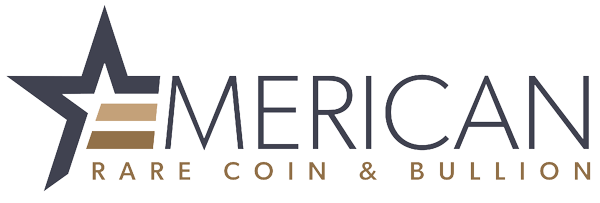I – EXEMPTIONS FROM SALES AND USE TAX
Rare coins, which are considered “monetized bullion”, are exempt from sales and use taxes in many states if they are purchased in amounts over $1,000 or $1,500 in a single invoice, even from dealers located in the taxpayer’s state. By avoiding sales tax, rare coin investors retain more of their investment while still having the option of doing business with local dealers.
II – INCOME TAX BENEFITS
Rare coins can be quite profitable investments. However, unlike stocks, whose dividends are taxed annually even if they are in the form of new stock and not cash, income from the sale of coins is tax-deferred until the coins are sold. In other words, a coin investor can defer taxable gains until a time of his or her own choosing. However, rare coins remain capital assets for purposes of the reduced tax rate once the taxpayer has held them for 6 months. There are other potential benefits as well.
Treatment of Expenses and Capital Losses
Rare coin investors can deduct expenses relating to their coin portfolios such as grading fees, insurance, security, membership dues for collectors’ clubs and subscriptions to relevant periodicals. The key to qualifying as an investor for tax purposes (rather than a collector) is whether the taxpayer is buying coins primarily for profit or for enjoyment. Of course, investors also enjoy their coins. However, investors who show a profit from their coin purchases for three of the past five years, rely on the advice of experts when making their purchases, and who risk at least the possibility of losses in any particular year, will be classified as investors for tax purposes as well.
Deferring Taxes through Like-Kind Exchanges
The “like-kind” exchange under Section 1031 of the Internal Revenue Code is another potential benefit of buying coins for investment. That Code provision allows investors to trade items which have appreciated in value for items of the same “nature or character” without recognizing income or capital gains on the transaction. The IRS has consistently held that coins qualify for Section 1031 treatment, such as in the following cases: Rev. Rul. 76-214 (Mexican 50-peso gold coins for Austrian 100-corona gold coins); Rev. Rul. 76-249 (pre-1964 U.S. silver coins for real estate); 79-143 (U.S. $20 gold coins for Krugerrands – not like kind). For investors interested in shifting from one area to another, this can be a good tax-avoidance technique. However, it must be carefully done to conform to the Code, so I recommend doing this with a reputable dealer involved.
The initial requirement is that the items being traded and those received must be held purely for investment purposes, just as I described above for distinguishing investors from collectors. Then, the items must truly be of “like kind”, which trips up many investors in other types of assets but is not a difficult issue with rare coins. The taxpayer may not trade a pre-1933 $20 gold piece for a “bullion” coin (such as a 2014 $50 Buffalo gold piece) because the rare coin is seen as held for its collectible value while the modern coin is seen purely as a precious metal investment. However, essentially any pre-1933 gold coin is considered “like” with any other such coin. Through like-kind exchanges, the taxpayer may defer income tax on any profit until final disposition, without limit. For example, an investor who purchases generic pre-1933 $20 Saint Gaudens gold pieces and is in a substantial profit position may “trade up” to proof gold $20s and not recognize any taxable gain, and later trade those coins for still other coins.
Holding Coins in IRAs
Until the Reagan 1981 tax law took effect on January 1, 1982, rare coins could be purchased for placement in an IRA or other retirement plan. Since that date, purchase of “collectibles” by a retirement plan has been deemed a distribution for tax purposes. However, in 1986 Congress began re-introducing coins into IRAs with the U.S. Mint American Eagle program. U.S. commemorative gold and silver coins dated 1986 and later may now be purchased for retirement accounts. IRA-eligible coins include American Buffalos, American Eagles and Proof American Eagles. When Congress designates such coins as IRA-eligible, it is indirectly encouraging Americans to invest in them. Every year, bills are introduced to expand the categories of coins eligible for inclusion in IRAs to all U.S. legal tender coins, which would encompass pre-1986 coins and return IRAs to their original intent.
Recently, taxpayers have begun asserting more control over their IRAs by holding assets in the name of a limited liability company (LLC) that they own, but which for legal purposes is sufficiently independent to act as an IRA trustee. The court cases decided so far (including one in 2014) are unanimous that this structure is legal in principle. Here is how it works. An IRA acquires an LLC and uses the LLC’s bank account to buy coins. This conforms to all IRA requirements, provided no other “prohibited transactions” take place. For example, taxpayers should not pay themselves management fees or hire family members to manage the LLCs.
Avoiding 1099 Filing Requirements
IRS reporting requirements apply to dealers purchasing certain precious metal coins and bars from collectors and investors beyond established dollar thresholds, meaning that the dealer will issue a Form 1099 notifying the IRS of the date and gross amount of the purchase, as well as the taxpayer’s name, address and Social Security number. Which coins and in what quantities is complicated, but rare coins are not subject to any 1099 filing requirements whatsoever, a huge advantage for precious metal investors concerned with privacy.
For a short time after passage of the Affordable Care Act in 2010, much was written about a provision in that law that required businesses to file 1099s whenever they made purchases of any kind in excess of $600. There was concern that coin investors’ privacy would be invaded, with 1099s being filed every time an investor sold a coin. While most of the Obamacare law remains intact, this particular provision was repealed by a bi-partisan vote in Congress before it even took effect.
III – TAXES/DUTIES ON IMPORTING OR EXPORTING COINS
Simply put, there are not any. Rare coins enter and leave the U.S. duty-free and tax-free. For pre-1933 U.S. coins in particular, there are no duties because the coins remain legal tender and were originally manufactured in the U.S. While large values of coins should be declared when imported into the U.S., there is no duty. The same is true for the exportation of coins.
Moreover, while the U.S. requires reporting of exportation or importation of more than $10,000 in currency or currency-type instruments, pre-1933 U.S. coins are not considered currency beyond their stated face values. Therefore, for currency control purposes, a 1927 $20 gold piece is valued at its legal tender value of $20, even if its numismatic value is much higher.
IV – ESTATE PLANNING AND CHARITABLE DONATIONS OF ART AND COLLECTIBLES
Estate Tax
Most taxpayers need not concern themselves with estate tax avoidance. Based on current (2014) estate tax thresholds, only those whose estates are likely to exceed $5,340,000 have any estate tax liability. In addition, the unlimited marital deduction is still in effect, allowing a taxpayer to bequeath his or her entire estate to a spouse tax-free. Nevertheless, these tax thresholds change and taxpayers likely to leave substantial estates upon death should work with competent professionals to develop an appropriate estate plan. All taxpayers possessing substantial coin collections should be aware of the basic rules governing their part in an estate plan.
Under Section 1014(a) of the Internal Revenue Code, the decedent’s basis in his or her coin portfolio will be “stepped-up” to the fair market value at time of death. This can be a huge benefit if proper planning is done. For example, by bequeathing coins to a spouse, the decedent allows the spouse to acquire the coins tax-free at their fair market value at the time of death, and not at what the decedent originally paid for the coins. The spouse can then sell the coins without recognizing any gain or income, years’ worth of appreciation in value going untaxed. Most of these same benefits also accrue to taxpayers who make gifts of coins to their spouses during their lifetimes, although certain guidelines should be followed when doing this. The stepping-up is also beneficial to non-spouses who receive coins in the decedent’s will.
Charitable Gifts of Art or Collectibles
Taxpayers often make lifetime or testamentary (by will) gifts of appreciated art and collectibles to charitable organizations. Indeed, many taxpayers create charities just to receive, manage, and distribute their collections. The intricacies of using tax-exempt organizations for philanthropic or tax-avoidance purposes is beyond this article, but here are a few basic questions to consider.
The first question is whether the coins being donated are long-term capital gain property. If so, the donor may deduct the full fair market value of the coins at the time of the gift, including market appreciation. If not, the donor can deduct only his or her actual basis in the coins, which is generally the amount the donor paid to purchase them. Generally speaking, coins held over one year will be considered long-term capital gain property.
The next question is the use to which the charity puts the donated coins. Charities sometimes accept gifts for their own use as part of their regular activities, and in other cases, charities sell gift items as part of their fund-raising. According to the Internal Revenue Code, items of tangible personal property which the charity puts to a use “not unrelated” to the charity’s tax exempt purpose may be deducted to their full fair market value, but items which the charity uses for “unrelated” purposes may not. Here is the example given by the IRS in Publication 526, entitled “Charitable Deductions”:
“If a painting contributed to an educational institution is used by that organization for educational purposes by being placed in its library for display and study by art students, the use is not an unrelated use. But if the painting is sold and the proceeds are used by the organization for educational purposes, the use is an unrelated use.”
The most common “unrelated use” in the art and collectibles field is the charity auction, where collectors donate items to be sold for the benefit of charitable organizations. The IRS’s example demonstrates the peculiar nature of the “related-unrelated” distinction. A collector choosing between two organizations to which to donate a particular item might well find that one organization would put the item to a related use while the other would not. An example would be donating a coin collection to the American Numismatic Association rather than to the local ballet company. If the coins have appreciated greatly over time, donating to the ANA might result in a much higher tax deduction. Be sure to get expert advice here.
CONCLUSION
Coins bring much enjoyment to their owners, but they can also provide substantial benefits to knowledgeable collectors and investors. These areas are complex, and there is no “one size fits all” strategy for maximizing these benefits. It is best to work with dealers, attorneys and financial advisors who understand coins’ tax treatment and know the taxpayer’s particular situation.

